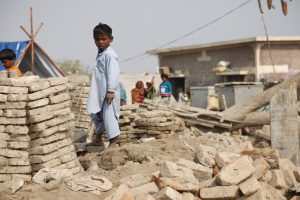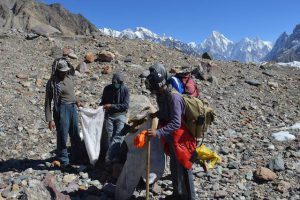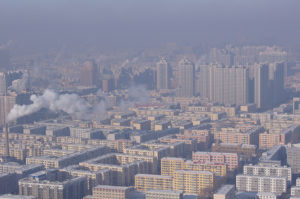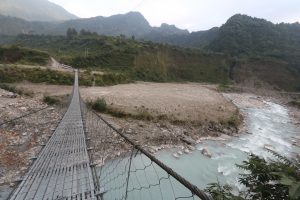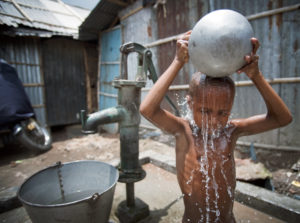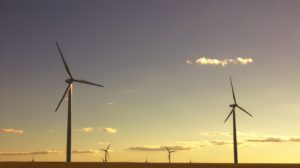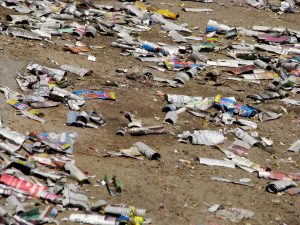Professor Marcus Nüsser has been working in the Himalayan region since the late 1980s, and has travelled across the ridges from the western Hindu Kush and Karakorum ranges to the eastern Himalayan. Since 2006 he has been the Chair of the Geography Department at the South Asia Institute at Germany’s prestigious Heidelberg University. He was in Delhi to deliver the keynote address at a conference titled, “Global environmental change in the Himalayan Region: Controversies, Impacts, Futures”. There was also an exhibition of the photographs that Professor Nüsser has taken of the glaciers in the region. He spoke to thethirdpole.net about his work, his concerns and his hopes for the Himalayan region.
thethirdpole.net (TTP): How did you become interested in the Himalayan region?
Professor Marcus Nüsser (MN): I was always interested in mountains, but initially my focus was much more on Africa. I went on a motorcycle trip through North Africa, but when I had to travel to do my research in 1990 Algeria had become unsafe. Ironically the Himalayan region, especially the Karakorum range in Pakistan, was far safer, so I started my work there. In 1992 I started my Ph.D. work, and travelled to Nanga Parbat in the northwestern Himalayas for three months every year for five years.
TTP: But your work initially did not focus on glaciers?
MN: No. My Ph.D. was on natural resource and patterns of land use by human settlements in that area, but as you can see from my photographs, I started taking an interest in the mountain geography even then. But it was in the wake of the 2007 Intergovernmental Panel on Climate Change (IPCC) report that speculated that the Himalayan glaciers might completely recede by 2035 that I started focussing on glaciers. While glacier retreat is a reality along the Himalayan arc, it is highly differentiated across the region.
TTP: What does this mean, in layman’s terms?
MN: Glacier retreat is a reality in general, but it is seen differently in different places. In fact, in the western Karakorum ranges there are some glaciers that are actually lengthening slightly. It depends on the geography. Glaciers in higher reaches, above 5,500 metres, are less affected by the warming that has taken place, while those glaciers nearer 3,000 metres are much more affected. Crudely put, glaciers in the western areas are less affected than glaciers in the eastern Himalayan region. But even this is too broad a generalisation, as some glaciers are affected more than others despite being in similar geographic areas.
![The Lirung glacier as it was 1949 [image by Oleg Polunin]](http://thirdpole.n.infoamazonia.org/wp-content/uploads/sites/2/2015/11/Langtang-Lirung-glacier-O-Polunin-1949.jpg)
MN: Erwin Schneider was an Austrian mountaineer and cartographer. He was part of the first German expedition, under Nazi rule, to Nanga Parbat in the extreme northwestern part of the Himalayan region in 1934. In 1955 he became the first person to make a detailed map of Mount Everest. Oleg Polunin was a British botanist, and accompanied the first foreign expedition to Nepal in 1949. They were both exemplary photographers, and I have tried to shoot some pictures from the same views. I also did that with a huge number of photographs from the expeditions to Nanga Parbat in the 1930s. The detailing using glass plates by them is phenomenal and rivals the best equipment we have today.
![The Ngozumpa glacier as it was in 1955 [image by Erwin Schneider]](http://thirdpole.n.infoamazonia.org/wp-content/uploads/sites/2/2015/11/Ngozumpa-glacier-E-Schneider-1955.jpg)
![The Ngozumpa glacier in 2012 [image by Marcus Nusser]](http://thirdpole.n.infoamazonia.org/wp-content/uploads/sites/2/2015/11/Ngozumpa-glacier-MN-2012.jpg)
MN: The reality is that mountains have always been harsh environments to live in. Mountain people have always had to cope with natural challenges. Of course with glacial retreat the challenge of dealing with glacial lake outburst floods, called GLOFs, increases, but maybe what concerns me more is the increase of habitation and density of populations in certain hazard-prone localities in the mountains. These were always risky places to live in, and people had mechanisms to deal with the risk, but the large and dense settlements are new to the mountains and these break up the old systems of managing risk.
TTP: Are these problems similar across the mountain regions? Are there lessons to be learned from each other?
MN: Some adaptive techniques would be similar across the region. For example, Chhewang Norphel’s “artificial glaciers” are an excellent form of adaptation/mitigation. There are communities in the northern parts of Pakistan that could replicate these models. Unfortunately meetings between Indian and Pakistani experts are really difficult to arrange. India has many established centres of study on these issues now; Pakistan has much fewer. There is no reason why one cannot learn from the other. There is collaboration between China and Pakistan, but almost exclusively on Chinese terms. There needs to be more balanced, open exchange of information and knowledge.
TTP: And this conference in Delhi is aimed at that?
MN: Yes. We have been cooperating with people like Professor R.B. Singh, the head of the Department of Geography at the Delhi School of Economics, Delhi University and Professor Harjit Singh at the Centre for the Study of Regional Development, School of Social Sciences, at Jawaharlal Nehru University. At this conference we have more experts from India and Germany, and it would be good if we could formalise this interaction for joint projects, fieldwork and publications.
TTP: Is this the hope you see in the region, larger regional cooperation?
MN: Partially, but you have to see that the problems are different in different regions. In the Indus region there is a lower impact of the monsoon and less vegetation, so the focus must be on the snow and ice. In the eastern Himalayan region, we have to watch both the impact of the monsoons and the greater retreat of glaciers. What really gives me hope is the increasingly active participation of many villages in these efforts. They have the local knowledge and they are the most affected. Local inhabitants hold the key to dealing with climate change in the Himalayas. With access to information, often provided by NGOs, these communities are becoming increasingly active, and that is a good thing – one that we need to support.
![<p>The Lirung glacier, and how it has melted since 1949 [image by Marcus Nusser]</p>](https://dialogue.earth/content/uploads/2015/11/Langtang-Lirung-glacier-MN-2012.jpg)

